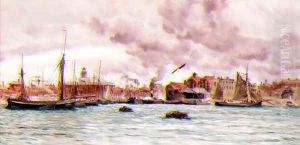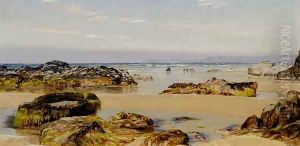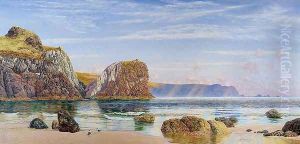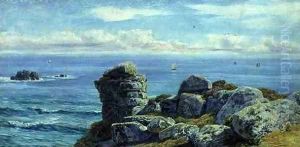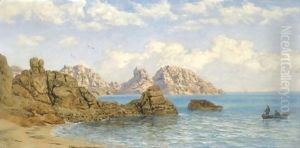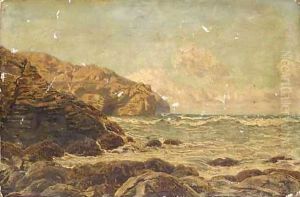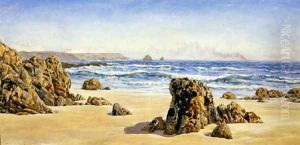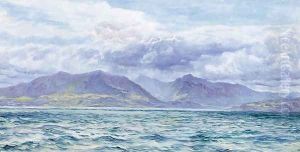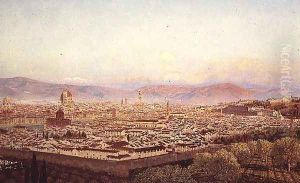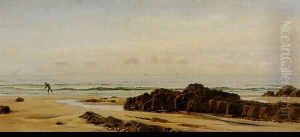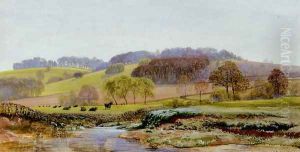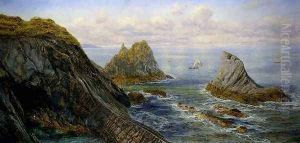John Edward Brett Paintings
John Edward Brett was an English artist associated with the Pre-Raphaelite movement, renowned for his highly detailed landscapes and marine paintings. Born in 1831 in Reigate, Surrey, Brett showed an early interest in art, which led him to study at the Royal Academy Schools starting in 1851. There, he was influenced by the works of John Ruskin and the burgeoning Pre-Raphaelite Brotherhood, which emphasized the importance of precision, vivid colors, and intricate details in nature.
Brett's adherence to these principles was evident in his meticulous approach to painting. In 1858, his work 'The Stonebreaker', highly praised for its detail and realism, marked his breakthrough and demonstrated his commitment to Pre-Raphaelite ideals. This painting was celebrated for its almost scientific realism, which was a direct influence of Ruskin’s teachings about observing nature.
Throughout the 1860s, Brett continued to refine his technique and subject matter, focusing increasingly on marine landscapes. His most famous work from this period, 'Val d'Aosta', was exhibited in 1859 and is remembered for its luminous skies and precise depiction of atmospheric effects. Brett's fascination with the sea and natural light culminated in several voyages along the coasts of Britain and the Mediterranean, where he sketched and painted seascapes with meticulous detail.
In the latter part of his career, Brett’s interest shifted towards a slightly looser style, although he never abandoned his detailed approach. His works from this period show an increasing engagement with atmospheric effects and light, influenced by the Impressionists, yet he remained distinct in his methodical attention to detail.
John Edward Brett passed away in 1902, leaving behind a legacy that highlighted both his devotion to the Pre-Raphaelite movement and his unique contributions to British landscape and marine painting. His works continue to be studied and admired for their precision and beauty, illustrating his lifelong commitment to portraying the natural world.


